Phu Gia Hoang
VLUE: A New Benchmark and Multi-task Knowledge Transfer Learning for Vietnamese Natural Language Understanding
Mar 23, 2024Abstract:The success of Natural Language Understanding (NLU) benchmarks in various languages, such as GLUE for English, CLUE for Chinese, KLUE for Korean, and IndoNLU for Indonesian, has facilitated the evaluation of new NLU models across a wide range of tasks. To establish a standardized set of benchmarks for Vietnamese NLU, we introduce the first Vietnamese Language Understanding Evaluation (VLUE) benchmark. The VLUE benchmark encompasses five datasets covering different NLU tasks, including text classification, span extraction, and natural language understanding. To provide an insightful overview of the current state of Vietnamese NLU, we then evaluate seven state-of-the-art pre-trained models, including both multilingual and Vietnamese monolingual models, on our proposed VLUE benchmark. Furthermore, we present CafeBERT, a new state-of-the-art pre-trained model that achieves superior results across all tasks in the VLUE benchmark. Our model combines the proficiency of a multilingual pre-trained model with Vietnamese linguistic knowledge. CafeBERT is developed based on the XLM-RoBERTa model, with an additional pretraining step utilizing a significant amount of Vietnamese textual data to enhance its adaptation to the Vietnamese language. For the purpose of future research, CafeBERT is made publicly available for research purposes.
ViHOS: Hate Speech Spans Detection for Vietnamese
Jan 26, 2023Abstract:The rise in hateful and offensive language directed at other users is one of the adverse side effects of the increased use of social networking platforms. This could make it difficult for human moderators to review tagged comments filtered by classification systems. To help address this issue, we present the ViHOS (Vietnamese Hate and Offensive Spans) dataset, the first human-annotated corpus containing 26k spans on 11k comments. We also provide definitions of hateful and offensive spans in Vietnamese comments as well as detailed annotation guidelines. Besides, we conduct experiments with various state-of-the-art models. Specifically, XLM-R$_{Large}$ achieved the best F1-scores in Single span detection and All spans detection, while PhoBERT$_{Large}$ obtained the highest in Multiple spans detection. Finally, our error analysis demonstrates the difficulties in detecting specific types of spans in our data for future research. Disclaimer: This paper contains real comments that could be considered profane, offensive, or abusive.
Vietnamese Hate and Offensive Detection using PhoBERT-CNN and Social Media Streaming Data
Jun 01, 2022

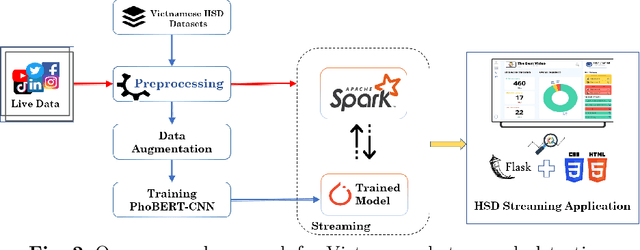

Abstract:Society needs to develop a system to detect hate and offense to build a healthy and safe environment. However, current research in this field still faces four major shortcomings, including deficient pre-processing techniques, indifference to data imbalance issues, modest performance models, and lacking practical applications. This paper focused on developing an intelligent system capable of addressing these shortcomings. Firstly, we proposed an efficient pre-processing technique to clean comments collected from Vietnamese social media. Secondly, a novel hate speech detection (HSD) model, which is the combination of a pre-trained PhoBERT model and a Text-CNN model, was proposed for solving tasks in Vietnamese. Thirdly, EDA techniques are applied to deal with imbalanced data to improve the performance of classification models. Besides, various experiments were conducted as baselines to compare and investigate the proposed model's performance against state-of-the-art methods. The experiment results show that the proposed PhoBERT-CNN model outperforms SOTA methods and achieves an F1-score of 67,46% and 98,45% on two benchmark datasets, ViHSD and HSD-VLSP, respectively. Finally, we also built a streaming HSD application to demonstrate the practicality of our proposed system.
UIT-E10dot3 at SemEval-2021 Task 5: Toxic Spans Detection with Named Entity Recognition and Question-Answering Approaches
Apr 15, 2021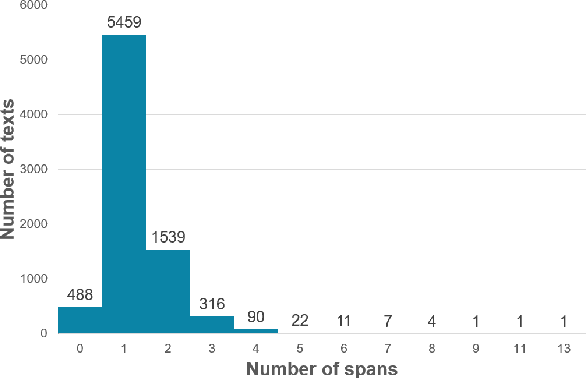
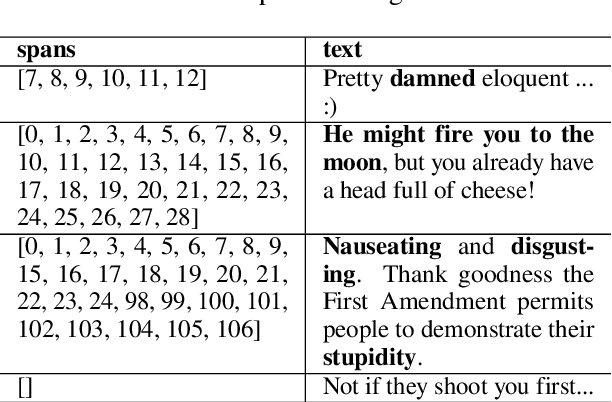
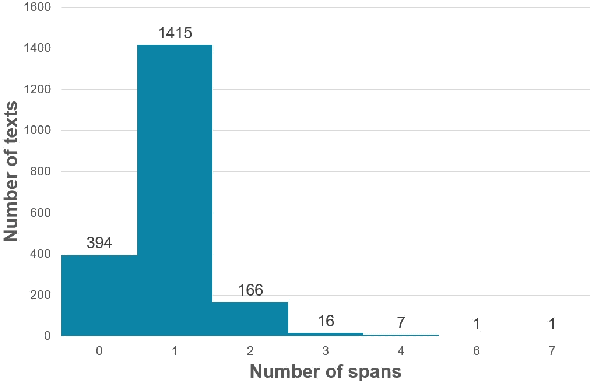
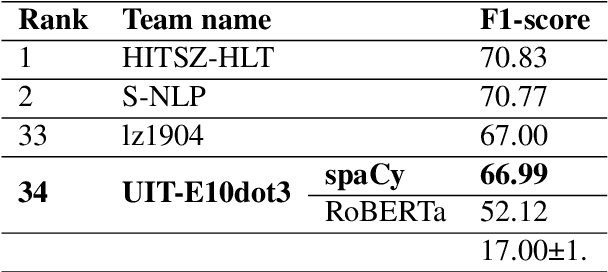
Abstract:The increment of toxic comments on online space is causing tremendous effects on other vulnerable users. For this reason, considerable efforts are made to deal with this, and SemEval-2021 Task 5: Toxic Spans Detection is one of those. This task asks competitors to extract spans that have toxicity from the given texts, and we have done several analyses to understand its structure before doing experiments. We solve this task by two approaches, Named Entity Recognition with spaCy library and Question-Answering with RoBERTa combining with ToxicBERT, and the former gains the highest F1-score of 66.99%.
 Add to Chrome
Add to Chrome Add to Firefox
Add to Firefox Add to Edge
Add to Edge